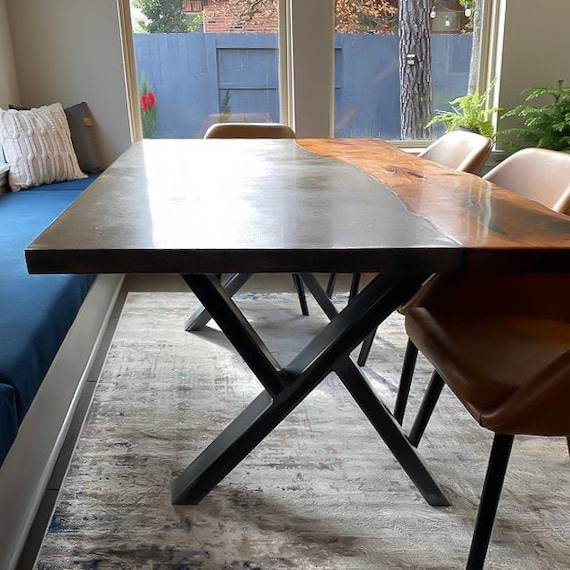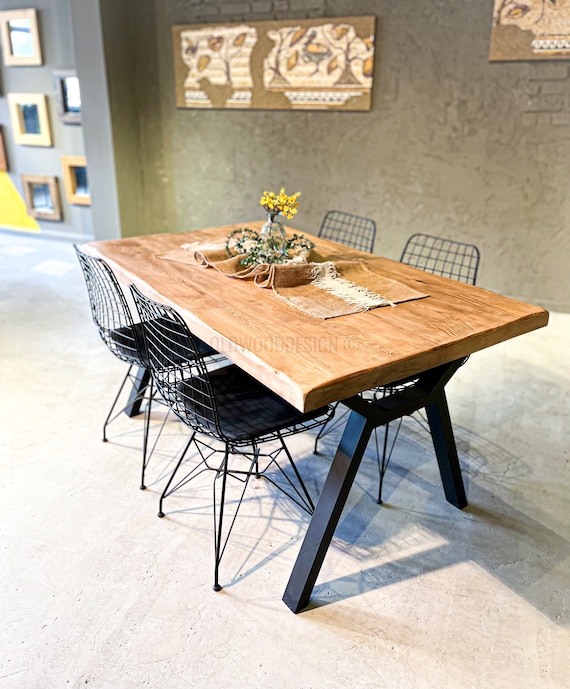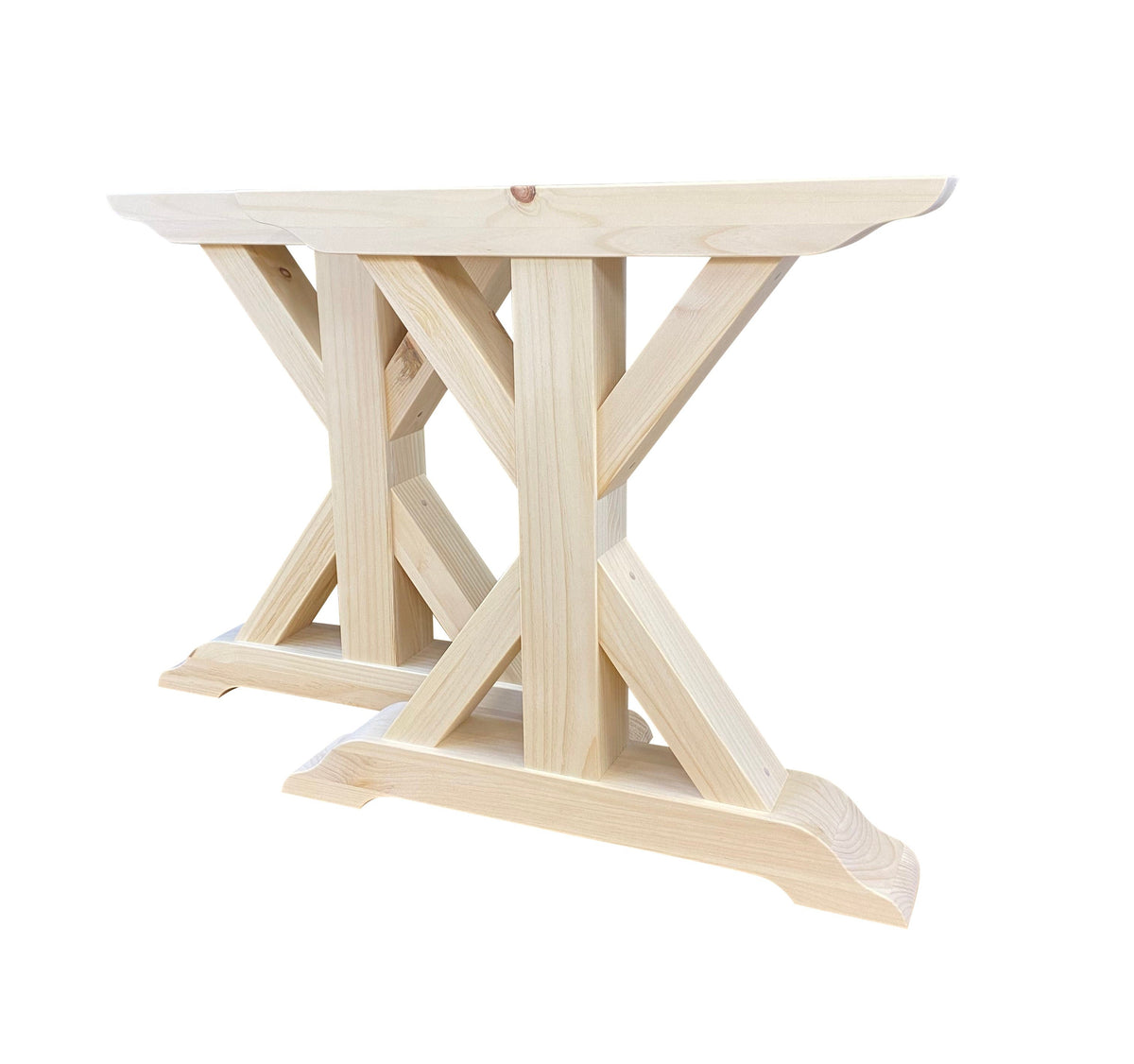Bring Heat and Personality to Your Area with Dining Table Legs Wood
Bring Heat and Personality to Your Area with Dining Table Legs Wood
Blog Article
Essential Factors To Consider for Choosing the Right Dining Table Legs Timber
Picking the appropriate timber for dining table legs entails a nuanced understanding of numerous elements that influence both capability and aesthetic charm. The option of timber type, varying from durable woods to more delicate softwoods, plays a critical role in ensuring durability and stability. Each of these elements can considerably influence the general experience of your dining area.
Value of Timber Type

Hardwoods, such as maple, oak, and walnut, are typically favored for their toughness and resistance to put on. These sorts of timber give a robust structure that can stand up to daily usage, making them excellent for dining tables that experience constant gatherings. On the other hand, softer timbers like pine might be extra at risk to dents and scrapes, which may not be perfect for high-traffic locations.
In addition, the choice of timber can also affect the convenience of upkeep. Some woods need routine oiling or sealing to protect their look, while others might be much more forgiving. Inevitably, choosing the appropriate wood type includes stabilizing aesthetic factors to consider with practical requirements, guaranteeing that the eating table legs not only look appealing but also stand the examination of time.
Examining Stability and Toughness
When assessing eating table legs, one have to consider the stability and toughness they give to the total structure. The legs are essential in sustaining the tabletop and making sure the eating experience is secure and enjoyable. A stable table is necessary for stopping wobbling or tipping, which can result in spills or mishaps throughout dishes.
The option of wood type dramatically influences strength. Woods such as walnut, maple, and oak are typically extra robust and sturdy than softwoods like ache or fir. Additionally, the thickness and style of the legs play a vital role; thicker legs or those with a tapered design can offer much better assistance and security.

Aesthetic Factors To Consider
While functionality is critical, the aesthetic allure of table legs can not be ignored, as they significantly affect the total design and setting of the dining room. The choice of layout, finish, and wood can take away or improve from the table's aesthetic influence.

Finishes likewise play a crucial role in aesthetics. A natural coating can highlight the wood's innate charm, while repainted or discolored legs can present color and character right into the area. The percentage and scale of the legs loved one to the table top and bordering furnishings should be taken into consideration to make sure aesthetic equilibrium and communication.
Inevitably, the dining table legs must not only offer a functional objective however likewise add to a cohesive and welcoming ambience, making them an important factor to consider in the general design of the dining area.
Maintenance Needs
To guarantee durability and preserve the appeal of wood table legs, routine upkeep is vital (Dining Table Legs Wood). Timber is a natural material that can be vulnerable to harm from dampness, warm, and wear. As a result, developing a regular treatment strategy will dramatically boost the toughness see here of your dining table legs.
Begin with regular dusting using a soft, lint-free fabric to eliminate dirt and particles that can scratch the surface. For even more comprehensive cleaning, use a light soap option and damp fabric, staying clear of excess moisture that can permeate into the timber. It is a good idea to use a top notch wood polish or conditioner every few months to nurture the timber and keep its gloss.
Furthermore, think about the environment where the table is positioned. Avoid straight sunshine, as it can trigger fading, and utilize coasters or placemats to protect the surface from warm and wetness. Resolve any scrapes or dents immediately with ideal wood filler or touch-up pens to avoid more degeneration. By sticking to these upkeep needs, you will certainly not only protect the visual appeal of your wood table legs but likewise expand their functional life expectancy.
Spending Plan and Expense Aspects
Spending plan and expense aspects frequently play a vital function in the decision-making procedure for choosing wooden eating table legs. When reviewing choices, it is important to establish a clear spending plan that aligns with your total furniture investment. The price of wooden table legs can vary substantially based upon the type of style, timber, and craftsmanship complexity.
Hardwoods such as cherry, oak, and walnut generally command greater costs due to their durability and visual appeal. On the other hand, softer woods like pine may be extra budget-friendly however might not supply the very same longevity. Additionally, customized or artisan-crafted legs can incur added expenses, reflecting the ability and time invested in their development.
It is additionally vital to take into consideration the potential lasting worth of your investment. While deciding for lower-cost materials might appear monetarily sensible initially, they might need even more constant replacement or fixings, inevitably increasing overall expense.
Consequently, balancing quality and price is crucial. Focus on materials that meet your visual choices while ensuring they fit conveniently within your budget plan, allowing you to produce an eating area that is both visually enticing and useful.
Verdict
To conclude, choosing the suitable wood for dining table legs necessitates careful consideration of numerous elements, including wood type, stability, appearances, maintenance, and budget plan. Hardwoods such as oak and walnut supply remarkable durability and strength, while design and thickness add to total security. Visual allure and upkeep needs should straighten with specific choices and lifestyle. Eventually, a well-informed choice will enhance the longevity and visual charm of the table, making sure satisfaction and capability for several years ahead.
Picking the appropriate type of wood for eating table my link legs is crucial for both visual allure and structural integrity. Ultimately, picking the ideal wood kind includes balancing visual considerations with practical demands, ensuring that the eating table legs not only look appealing yet additionally stand the test of time.
It is a good idea to apply a high-quality wood gloss or conditioner every few months to nurture the wood and preserve its appeal.
The price of wooden dining table legs can vary considerably based on the type of craftsmanship, timber, and layout complexity.
In conclusion, choosing the ideal wood for dining table legs necessitates see page mindful consideration of various elements, consisting of timber type, stability, aesthetics, maintenance, and budget plan.
Report this page